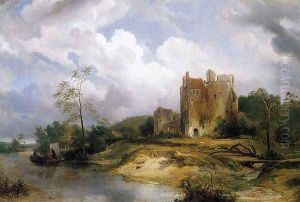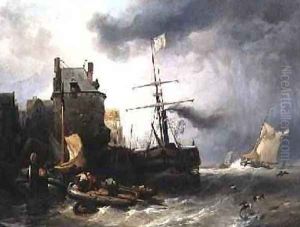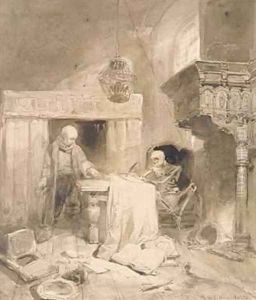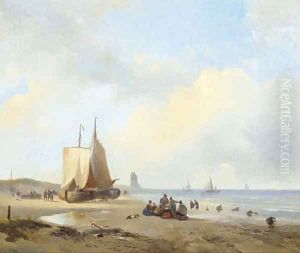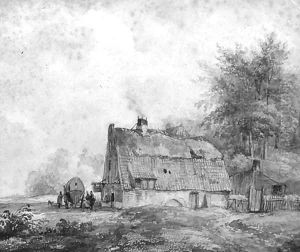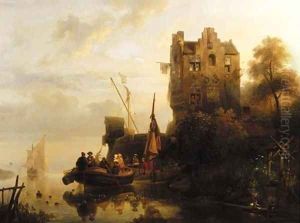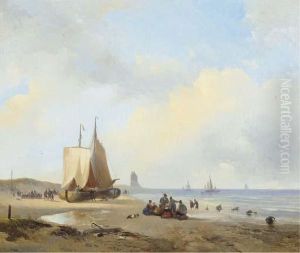Wijnandus Johannes Josephus Nuyen Paintings
Wijnandus Johannes Josephus Nuyen, known as Wijnand Nuyen, was an influential Dutch painter and printmaker born on March 4, 1813, in Den Haag (The Hague), Netherlands. Despite his brief life, Nuyen's work left a significant mark on the Romantic movement in Dutch art, and he is remembered for his dynamic seascapes, landscapes, and cityscapes.
Nuyen's artistic talent was recognized early, and he received his initial training from his father (a decorative painter), which was furthered under the guidance of prominent artists such as Andreas Schelfhout, a leading landscape painter of the time, and possibly Jan Baptist Weenix. These influences are evident in Nuyen's adept handling of light and atmosphere, characteristics that would define his mature style.
In a period marked by a revival of interest in the Dutch Golden Age, Nuyen’s work stood out for its emotional depth and dramatic use of color. His fascination with the sea and storms culminated in some of his most acclaimed works, which often depicted ships in distress or the aftermath of a storm, showcasing his skill in rendering the dynamic interplay of sky, water, and light.
Nuyen's career was, however, tragically short-lived. He moved to France in the 1830s, where he was exposed to the work of the French Romantic painters, further enriching his palette and broadening his thematic repertoire to include more historical and biblical scenes. This period in France was crucial in the development of his style, as it introduced a greater sense of movement and drama into his compositions.
Despite his potential for further greatness, Wijnand Nuyen died prematurely at the age of 26, on June 2, 1839, in Amsterdam. His sudden death cut short a promising career, but his influence endured, especially among Dutch Romantic painters who followed. Nuyen’s work is characterized by a passionate and sometimes melancholic longing for the sublime in nature, making him a pivotal figure in the Dutch Romantic tradition. Today, his paintings can be found in major museums in the Netherlands, including the Rijksmuseum in Amsterdam, showcasing his enduring appeal and the significant impact he had in his short life.
